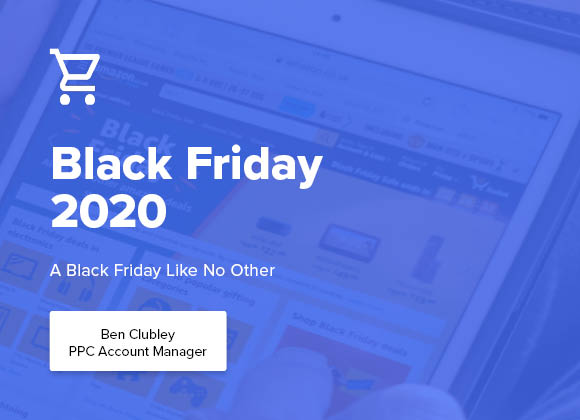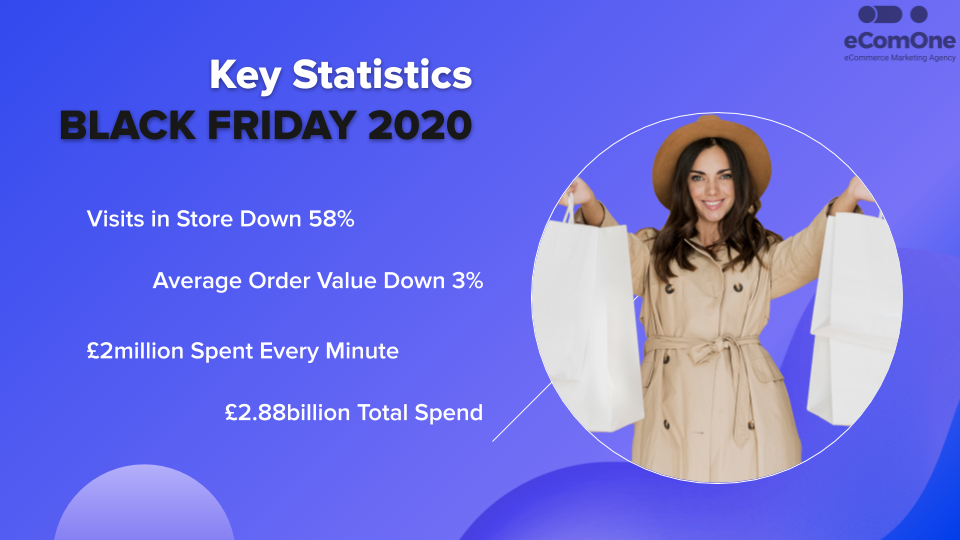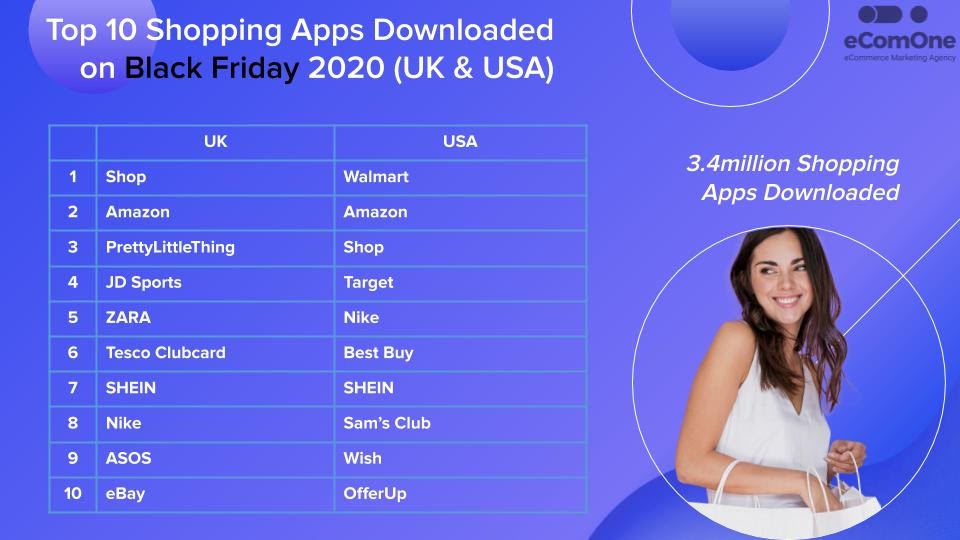Friday 26th November 2010. Amazon introduces Black Friday sales to Britain. Who doesn’t want Susan Boyle’s new CD for £1?
Friday 29th November 2013. ASDA are the UK’s first retailer to run Black Friday promotions in-store. With fantastic saving on flat-screen TVs and other electrical and home goods.
Friday 28th November 2014. Hundreds of other retailers jump on the bandwagon online and in instore, offering huge discounts on thousands of products. The British public go wild, literally, check out this video from my local ASDA back then.
Since then things have been rather normal. We’ve all calmed down slightly and regained a little bit of humanity.
But Friday 27th November 2020 was a Black Friday unlike any that we have seen before. In a world changed by a pandemic, we were forced online.
Black Friday – What, Why, When, Where, How
Let us take a short trip back in time to a typical Thanksgiving in Philadelphia, USA during the 1950s. Families gather and celebrate the country’s 2nd biggest holiday (with Christmas being first).
Now if you’re an American sports fan like myself, you know one thing about American’s. They love sports taking place during Thanksgiving, and during the 50s, every Saturday following Thanksgiving was headlined by a College American Football game between Army and Navy.
But Ben. What does American Football have to with Black Friday? Well, imagine 100,000+ people migrating to Philadelphia on the Friday after celebrating Thanksgiving, ahead of the game on Saturday. Now, these people are happy, they’ve got a stomach full of turkey, Christmas is around the corner, and they’re going to watch the football game. Of course, they go shopping.
But the origins of Black Friday aren’t all glamorous. These migrations of supporters would see the local police coin the term “Black Friday” due to the long hours they would have to work, managing large crowds, something that many shoplifters would try to take advantage of.
It wasn’t until the late 1980s when retailers looked to reinvent what “Black Friday” meant. They came up with a story. That the sales that occurred the day after Thanksgiving saw stores go from yearly losses (reported in red) to yearly profits (reported in black).
It stuck! Stores started running sales promotions on the day to tempt shoppers in-store, they opened earlier, the one-day sales soon turned to weekends, and longer.
Fast forward to where we are now and Black Friday can in some cases last a couple of weeks, both online and in-store, around the globe.
Black Friday 2020
Ok, let’s move on from our history lesson and talk statistics from this year’s Black Friday.
The headline for the day is this. Retail store sales saw large falls across the globe, including the United Kingdom, but there was a spending boom on online shopping.
In the UK, there was an increase in online orders by 37% compared to 2019, with revenue online also up by 23%.
In total there was £2.88billion spent on Black Friday by British shoppers, the majority of this being online. Despite the average order value down 3%, we bought more, seeing total spend on the day rise by 23% compared to the previous year.
This trend also applies to America, where Black Friday sales rose by 21.6% year-on-year, a total spend of $9.03billion.
Black Friday is no longer just one day of sales like it was back in Philadelphia in the 1980s. Many companies start their Black Friday promotions 2 or 3 weeks earlier. The Saturday following Black Friday is now Small Business Saturday, and the following Monday is now Cyber Monday.
Something that many may find surprising is that American’s spent more on Cyber Monday than on Black Friday. The day marketed in a way to encourage individuals to shop online saw shoppers spend $10.84billion, $1.81billion more than that spent on Black Friday, becoming the largest digital sales day ever.
Last year $142.4billion was spent in America across November. Despite Black Friday, Cyber Monday, Small Business Saturday all-seeing year-on-year growth, we saw less spent across the entire month, down to $100.3billion, a decrease of 29.56%.
If you’d like to find out more on how the American population shopped in November, you can check out Adobe Analytics who broke down the month, with a key focus on Black Friday and Cyber Monday.
As I mentioned earlier, the majority of this spend this year came online. Shopify reported that merchants using their platform collectively made $5.1billion across the Black Friday / Cyber Monday weekend.
In total there were over 44million individuals purchasing online from companies using the Shopify platform, this was a growth of 50% compared to 2019.
While we saw a jump in online sales, mobile purchases plateaued. 67% of sales on Shopify stores occurred on mobile devices in 2020, with 2019 seeing 68% of sales occur on mobile.
While there are significantly more purchases made on mobile, revenue is much lower than that of laptops, desktops and other devices. Across November, $39.6billion was spent on mobile devices across America, with computers and other devices seeing revenues of $60.7billion.
This isn’t too alarming and is something that we naturally see across digital marketing. While many people browse on their mobile devices and make smaller purchases, they tend to leave the bigger purchases on either their laptop, desktop or tablet device.
According to Adobe Analytics, some of the most purchased items this Black Friday weekend include Samsung & TCL 4K TVs, HP & Dell laptops and desktop computers, and the newly released Xbox Series X and Playstation 5, all of which are typical purchases a user will make on their laptop or tablet device.
One way to make these purchases is via the internet, another option available is via mobile and tablet apps. Across both the UK and the USA, 3.4million shopping apps were downloaded on Black Friday, with a further 2.6million downloaded on Cyber Monday.
Some of the top downloaded apps across the weekend include Amazon Shopping, Nike, SHEIN and Shopify’s Shop: Package & Order Tracker app. The top 10 apps downloaded on Black Friday across the UK and USA can be seen below.
The Winner Saves It All
Researchers found out that the average shopper in the UK saved themselves an average of £92 this Black Friday thanks to the fantastic promotions on offer.
It turns out when it comes to finding a bargain the men did better. Either that or we’re just stingy. The average man saved £112.20 compared to women who saved £72.50.
As seems typical with the Black Friday weekend, the best savings were on computers and electrical goods. The average shopper could save themselves 28.6% on computers on Black Friday and 25.3% on electronics for the same day.
This is a significantly higher percentage saving than that of the 10.8% saving on home improvement and 17.1% on toys. Though both are still very tempting discounts.
Show Me The Money
We’ve pretty much established Black Friday 2020 was unlike any Black Friday before. This is highlighted even more so in the performance of individual industry performances.
Both the Food & Beverage and Home & Garden industries saw significant increases in year-on-year revenue. With a 52% increase on Home & Garden products, and a 45% increase in revenue for the Food & Beverage industry.
This correlates with what we have bought throughout the Coronavirus pandemic and throughout local and national lockdowns.
Back in May, we uploaded a blog looking at how COVID-19 had impacted certain Search Terms and queries on Google. One thing we highlighted was how users were searching for terms such as “Food that Delivers” and “Garden Planning” had seen a sizeable increase when compared to the volume of queries pre-pandemic.
While there were also healthy year-on-year revenue increases in the Health & Beauty and Sporting Goods & Hobbies industries, the Fashion & Accessories industry saw a decrease in revenue by 4%.
Now I’m no expert when it comes to psychology and anthropology, but common sense tells me that the reasoning behind why there was a decrease in the Fashion & Accessories industry is that we haven’t been able to go out as much this year and that this Christmas, many of us won’t be able to go “out-out”.
Also, I’m sure many of you, like myself, seem to be going through an endless cycle of wearing the same couple of jumpers and joggers Realistically, I’ve probably touched about 10% of my clothes this year…
This is The End
Hold your breath and count to ten. The crazy Black Friday and Cyber Monday sales are out of the way, and we are now in the short run-up to Christmas.
Black Friday 2020 was unfamiliar to that of those that came before it. But if we look throughout the history of Black Friday, from 1950s Philadelphia, what the day is, what it means, and how it’s advertised, has transformed as purchasing behaviours have changed and technology has advanced.
30-years after the term Black Friday was coined, it was transformed and marketed in a way in which it would excite and entice shoppers into stores through amazing discounts.
Then another 30-years later, Britain was introduced to this strange sales bonanza from over the pond. During those years the sales had evolved, from a single day to multiple days, from solely in-store to also being online.
Now here we are, 2020. An extremely odd year which we would have never predicted. A year which saw what we want to purchase changed, a year that forced us to shop online, ultimately seeing Black Friday change with this.
But only time will tell whether we will continue to shop online during Black Friday, or whether we will all migrate to the highstreet come Friday 26th November 2021 for yet another weekend of crazy deals and shopping.



